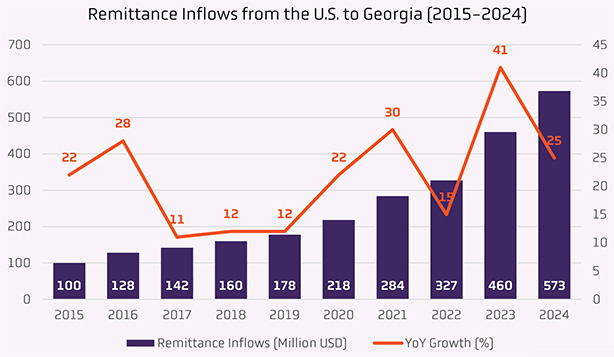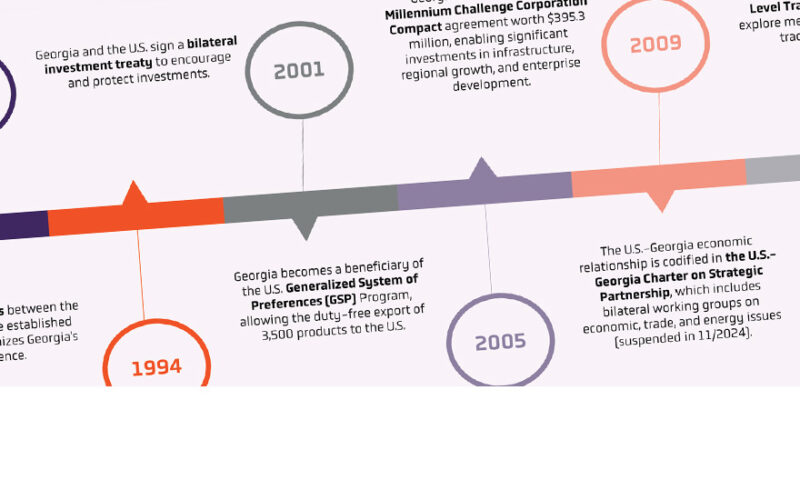Georgia and the U.S. – a profile on bilateral relations
On February 12, AmCham Georgia hosted Chairman and CEO of the Policy and Management Consulting Group (PMCG) Alex Aleksishvili, who presented an analysis of U.S.-Georgia bilateral relations.
Historical Background
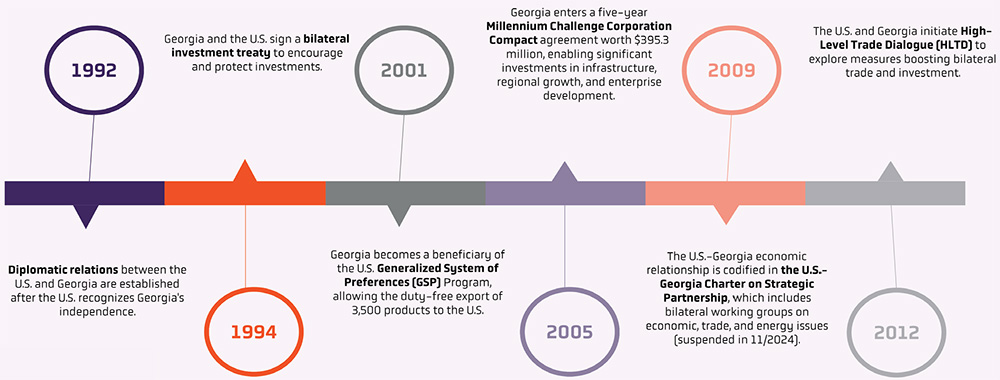
Note: On November 30, 2024 the United States announced that it was suspending its strategic partnership with Georgia due to a series of anti-Democratic actions by the ruling party
Bilateral trade between the U.S. and Georgia
Between 2015 and 2024, Georgia’s trade turnover with the U.S. increased sixfold, with a compound annual growth rate (CAGR) of 21.3%. The increase was largely driven from the import side, particularly in 2023 when the import of automobiles from the U.S. rose significantly. The U.S. share of Georgia’s total trade turnover has been steadily growing.
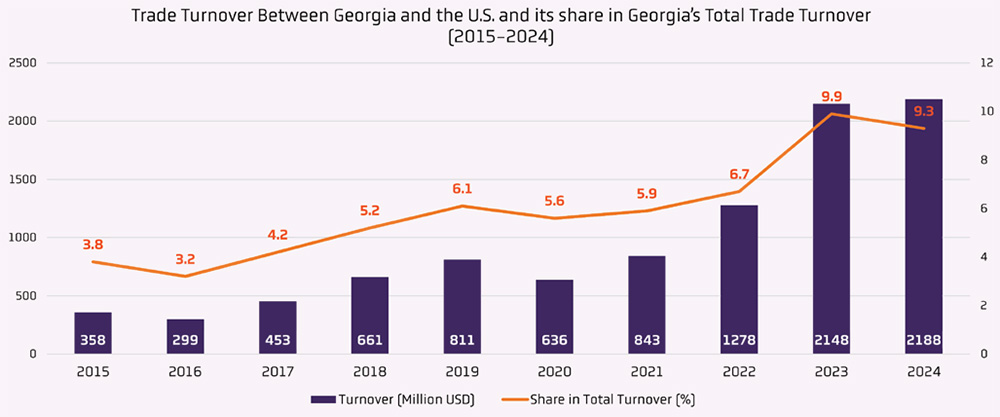
In 2024, the U.S. became one of Georgia’s top three trading partners for the first time.
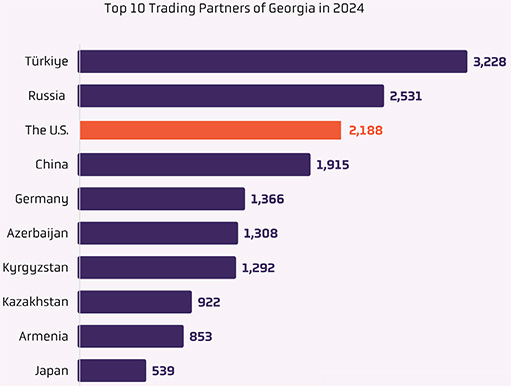
Top Traded Products Between Georgia and the U.S.
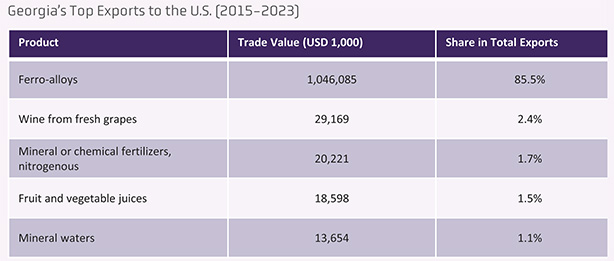

Foreign Direct Investment
From 2015 to 2024, FDI from the U.S. to Georgia reached $929.4 million. FDI flows have experienced consistent growth throughout this period except for 2020 and 2021, which were affected by disruptions related to Covid-19.
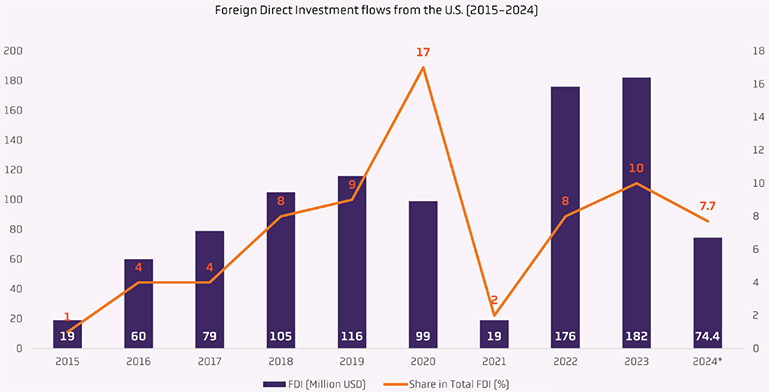
From 2015 to 2023, the majority of FDI inflows from the U.S. went into the ICT sector (53%).
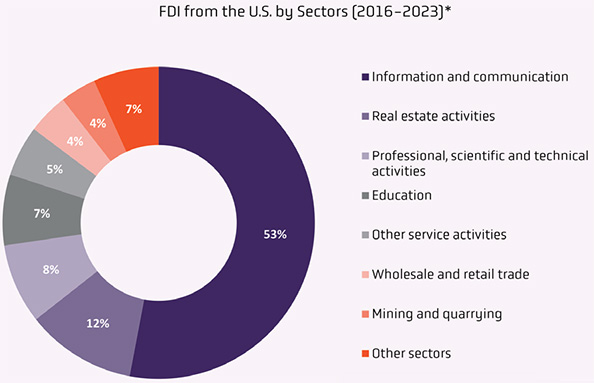
U.S. Multinational Enterprises in Georgia
Between 2015 and 2021, U.S. multinational enterprises (MNEs) held an average of $394 million in assets in Georgia, with a consistent upward trend until 2018. Since then, the total assets of U.S. MNEs and their value-added in Georgia have shown a noticeable decline. During the analyzed period, U.S. MNEs provided a total of $184 million in salaries to employees in Georgia.


Foreign Assistance
From 2015 to 2024, the U.S. provided $1.5 billion in foreign assistance to Georgia, with $720 million managed by the U.S. Agency for International Development (USAID). During this period, the top areas in which the U.S. provided foreign assistance in Georgia were “Peace and Security;” “Economic Development;” and “Democracy, Human Rights, and Governance.”
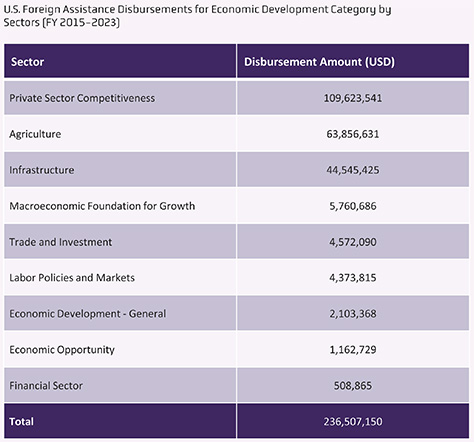
Migration
The stock of Georgian migrants residing in the U.S. has been growing steadily over recent decades. From 2000 to 2020, the stock of migrants from Georgia residing in the U.S. increased almost fourfold from 10,800 to 39,400. In 2020, the number of migrants from Georgia was 45.3% higher than in 2015. Furthermore, in 2020, 4% of total migrant outflows from Georgia were to the U.S.
Notably, the U.S. Department of Homeland Security does not publish data on unauthorized immigrants from Georgia, which, if available, would allow for a more informed overall picture of migration trends.
Remittance Flows
From 2015 to 2024, remittance inflows from the U.S. to Georgia grew steadily, increasing by approximately 5.7 times. During this period, the U.S. consistently ranked among the top remittance-sending countries to Georgia and was the third largest contributor to total remittance inflows.
In 2024, remittance inflows to Georgia totaled $3.36 billion, representing 10% of the country’s GDP. Notably, the U.S. accounted for the largest share of remittances to Georgia, representing 17% of the total inflow, or $573 million (.2% of GDP), highlighting Georgia’s increasing reliance on U.S. remittances.
Outlook
The United States has been a key economic and political partner for Georgia since its independence, says PMCG’s Chairman and CEO Alex Aleksishvili. However, he notes, the recent suspension of strategic relations between the two nations marks a significant setback, jeopardizing a longstanding partnership.
To rebuild this relationship and strengthen U.S. interests in Georgia amid the current foreign policy shift coming from the U.S., Aleksishvili says “the government should think about shifting from an ‘Ally in Need’ to more of a ‘Strategic Business & Security Partner’” as “under the Trump administration, transactional relationships dominate.”
He continues: “Georgia must offer tangible benefits to U.S. interests. As an example, this could be in the area of U.S. National Security where Georgia, as the U.S.’s Strategic Partner, plays a role against Russia, Iran, and China. Georgia can serve as a regional security hub for the U.S. in the South Caucasus and Black Sea region, helping to deter Chinese economic expansion through infrastructure projects (like the Belt and Road Initiative) and counter Russian and Iran influence.” Georgia could also “collaborate with the U.S. on counterterrorism, cyber threats, and hybrid warfare.”
In the area of infrastructure, Aleksishvili says, “U.S. private sector participation in all large regional infrastructure projects is becoming vitally important – whether these are seaport, electric and digital cables, or further development of roads and pipelines.”
And while it will be critical that the country demonstrate its value as a strategic business and security partner to the U.S., says Aleksishvili, it is also essential that “Georgia also benefit with economic, trade, and security benefits.”
